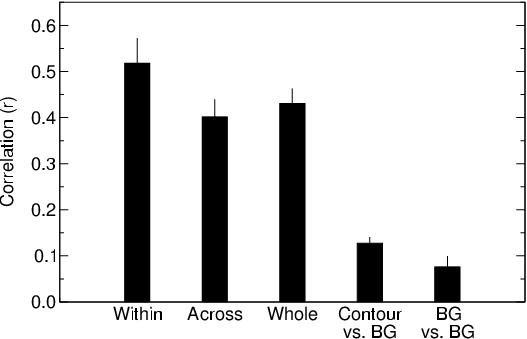
Click on the image to see a PDF version (for zooming in)
Fig. 13.18. Contour completion performance in the illusory
triangle. Each side of the triangle is represented by a group of
three MUA sequences, and constitutes a separate contour. The average
correlation coefficients were calculated over two trials for MUA
sequences representing two elements within the same side, across
different sides, anywhere in the whole triangle, one in a contour and
the other in the background, and within the background. The elements
in each side are strongly synchronized, but so are elements across
different sides and in the whole triangle (the differences between
"Within", "Across", and "Whole" are not significant with p >
0.1). Furthermore, the elements in the triangle are significantly more
synchronized than contour and background elements, and elements in the
background (p < 10-6). This result shows quantitatively
that the three sides are perceived together as a single object.
|